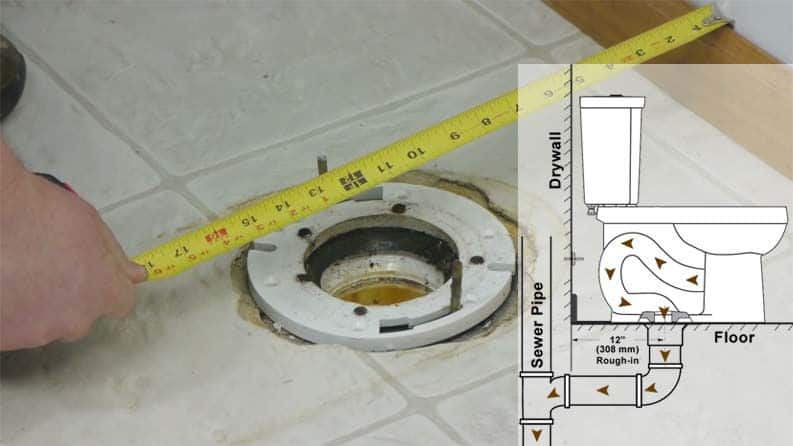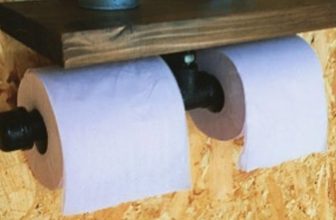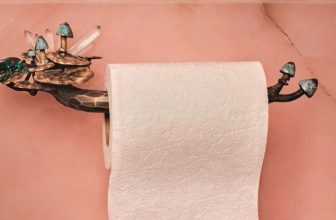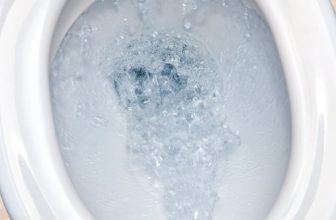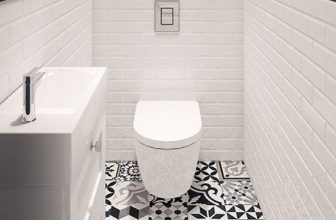If you think of getting a replacement for your old toilet or filling your brand-new bathroom with vital fixtures, knowing how to measure toilet rough in may be the key to success.
This is a parameter that describes the spacing between the toilet and the wall. Thus it is crucial for smooth mounting and can limit your choice considerably if you appear to have one of not frequent toilet rough in sizes.
Follow the step-by-step toilet rough in the measurement guide below to get reliable data on to base your decision.
Guide to Measuring Toilet Rough In
Rough in measurement is something that you might entrust to your plumber if you intend to rely on one. Those willing to save their time and money, however, might find the instructions below useful when shopping for a new toilet that allows for non-professional DIY installation.
What is the toilet rough in?
The term refers to the distance between the wall behind the toilet and roughly the place where it bolts to the floor. More specifically, it is the space from the wall surface (that is, finished) to the center of the floor mounting holes that should be taken into account. These holes are meant to accommodate the bolts, securing the toilet to the floor.
The dimension is standardized, 12 inches being the most widely found rough in across North America. However, deviations from the trend do happen, especially in not-so-new houses.
Why is it Important to know your toilet rough in distance?
Knowing your standard rough in for toilet shopping purposes is the same as knowing your size when you need an update for your wardrobe. If there’s an item you really love, but it’s only available in a size that won’t fit you, it’s likely to be of no use in the end.
It is not impossible to install a toilet with a smaller-than-ideal distance to the wall. Yet, this would mean a gap between the toilet and the back wall, which some people believe to compromise the aesthetics dramatically.
A scenario where you purchase an item with a rough in that is too large is even less optimistic. The cost you have every chance of paying if you decide not to send it back is not limited to troublesome installation. Much worse than that, poorly fitted toilets tend to show poor flushing performance and/or clog much more often than they should.
This said, measuring your rough in is vital when it comes to getting a toilet to upgrade. Follow the steps below to figure out the number correctly for a perfect fit.
Measuring steps
The only piece of equipment that you will need when measuring the rough in for your toilet is a regular tape measure.
Step 1: Factor in the baseboard
Before you even start measuring the actual distance, find out how thick the baseboard on the back wall is, if any. Forgetting this detail is a common mistake.
Including the baseboard in your measurement might skew it by about half an inch depending on how thick it is, possibly causing you to choose the next of the standard rough in sizes and resulting in a poor fit.
Step 2: Find the middle of the toilet flange
It is usually, but now always, aligned with the center of the discharge hole. If there are two bolts holding your toilet to the floor, use the middle point between them; with four bolts, measure the distance to the center of the rear couple.
Step 3: Take measurements
Keeping the tape measure up against the surface of the wall, preferably above the baseboard, make it a straight line that finishes at the center of the toilet flange. Note the distance that it shows.
The number is your toilet rough in. It doesn’t have to be 100% precise, but a deviation from the nearest standard size of several tenths of an inch should get you suspicious. We recommend that you go back to Step 1 and carry out the procedure once again before you go shopping.
Please remember that toilet offsets are standardized, meaning that your chances of obtaining a unique number, which is accurate, are very low. If you live in a newer house, 12 inches is the most probable result. Otherwise, expect a rough number from 10 to 14 inches.
Rough In FAQ
This section summarizes some of the most common questions when it comes to determining your rough-in size. See the guide above for more in-depth information.
How far should a toilet be from the wall?
This depends on what is considered to be a toilet. When measured from the back wall to the center of the space between the mounting boils in the toilet’s floor flange, this generally ranges from 10 to 14 inches.
What does roughly in mean for toilets?
Rough in is the most commonly used measure for toilet offset from the wall on the back of the toilet, namely the distance between the mid-point between the floor mounting bolts and the wall surface excluding any parts that might protrude such as baseboards.
What are common toilet rough in sizes?
If you live in North America, 12 inches is the most common rough in size. There are two other options, namely 14 and 10 inches, that are usually found in older homes and are likely to limit the range of products that you can choose from.
Getting the Measure of Your Toilet
No matter how much time you spend shopping for the very best and the smartest toilet out there, a poor rough-in can ruin it all. Grab your old installation data sheet if you are lucky or follow this measurement guide to restore the vital number and spare yourself some headache by investing in a fitting toilet.
Have you ever had a not-so-common rough-in toilet other than 12 inches? If yes, what do you think are some good models for the special case? You are welcome to share your experience in the comments!
Also read:
- Dual Flush vs Single Flush
- Round vs Elongated Toilet
- 1.28 vs 1.6 Gpf Toilets
- Best Rear Discharge Toilet
- How to Fix a Kohler Toilet That Keeps Running
- How to Fix a Wobbly Toilet
